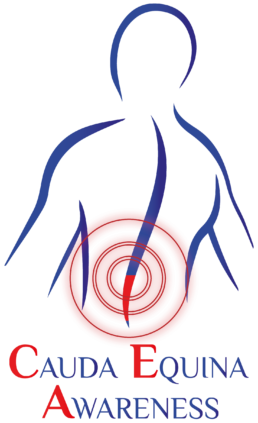Case Study E
E suffered Cauda Equina Syndrome after a failure to perform an MRI scan which would have indicated a need for decompression surgery.
Background
E had a long history of chronic back pain. For a number of years, she had attended the Defendant’s hospital regularly for investigation and treatment.
In November 2004, E had an MRI scan which confirmed bulging of the discs in her spine at the L4/5 and L5/S1 levels.
In 2006, E started to hobble due to reduced mobility of the right leg and in December 2006, her GP referred her to the orthopaedic department of the Defendant Trust.
On March 9, 2007, E underwent an MRI scan of her lumbar spine, which revealed a moderate size central disc prolapse at L5/S1, both S1 nerve roots were involved, there was a very small central disc prolapse at L4/5 and the discs were reported as degenerate.
E attended her GP in March and April having developed chronic lower back pain, a right leg limp and being unable to sit for long. The GP diagnosed her with sciatica.
On 24 May E fainted following severe back pain. She attended hospital the following day. She was noted to have severe pain, be hobbling and had developed weakness now in her left leg. E was discharged and was
advised that if she had saddle anaesthesia or sphincter disturbance “red flag” symptoms, then she should be reviewed immediately.
In the afternoon of 26 May E developed new symptoms. She lost sensation around her anus and urethral area and had no sensation whilst passing urine. An out of hours GP was called at 19.30 and after attending he noted “red alert” for Cauda equine Syndrome. E was taken by ambulance to hospital.
At 21.52, E arrived in A & E. At 23.15, E was examined and it was noted that she was numb in her upper thigh and bottom but no history of incontinence or retention and no loss of power was recorded. The notes stated she did not have Cauda Equina Syndrome.
E was discharged and advised to see her GP in a couple of days. She was advised to seek urgent review if she suffered “red flag” symptoms including incontinence of urine or inability to pass urine, faecal incontinence or constipation.
E attended her GP on May 29, complaining of urinary incontinence and intermittent numbness in her groin. Her GP advised her that he would try to expedite her appointment for a nerve root block.
By May 30, E’s symptoms had deteriorated. Her GP carried out a ‘safety net call’ to E and he noted that she was incontinent of urine and was experiencing increased saddle anaesthesia. He referred her as an emergency to the orthopaedic department of the hospital.
On admission to hospital E’s symptoms were noted, including 24 hour incontinence of urine, she had not opened her bowels in 4 days and she had no sensation when flatulent. The clinical impression was Cauda Equina Syndrome. E underwent L5/S1 discectomy and decompression surgery that night.
Outcome
E was left doubly incontinent, with weakness in her left leg and foot and ongoing pain in her back. E had ongoing mobility problems resulting from reduced sensation and weakness in her left leg and foot. She walked using two crutches. She experienced cramp in her leg at night which disturbed her sleep.
E had reduced sensation in the perineal area and persistent severe back pain, which required her to regularly alternate between standing and sitting. E suffered recurrent urinary tract infections requiring prophylactic antibiotics. E had no urethral sensation and had to self catheterise. E had to use an irrigation system to empty her bowels. C suffered from permanent sexual dysfunction. E suffered low self esteem and psychological symptoms that were anticipated to be permanent. E had worked as a fishmonger in a supermarket before her condition and it was not anticipated she would return to work.
E brought a claim against the Trust on the basis that they failed to admit her for an urgent MRI scan on May 26, 2007, and to undertake decompression and urgent discectomy within 24 hours of that admission.
E’s expert evidence was that but for the Trust’s negligence, she would most likely have been in incomplete Cauda Equina Syndrome (CESI). Her bladder and bowel would have been normal; sexual function would have been largely normal and the weakness and cramps in her left leg would have gone. She would not have required crutches to mobilise and she would not have suffered recurrent depression.
The Defendant Trust admitted that owing to her “red flag symptoms” the A & E doctor should have requested an MRI scan, which would have led to surgery within 24 hours.
E agreed on a settlement with the Defendant Trust for £820,000.
The case was reported on Lawtel.
